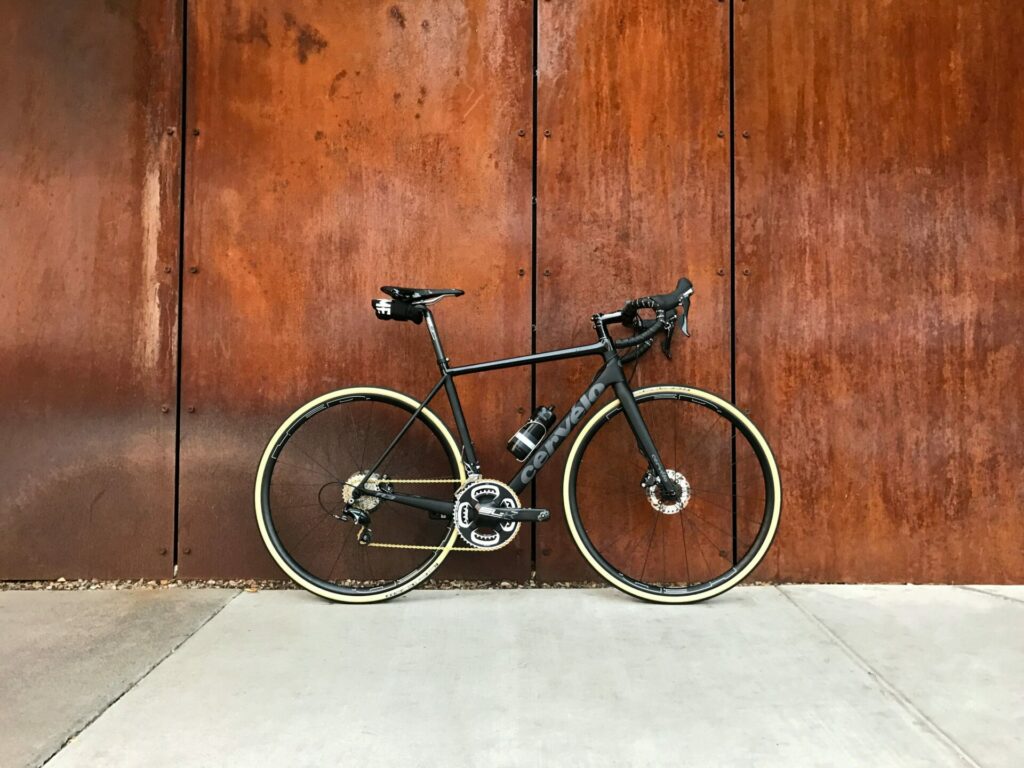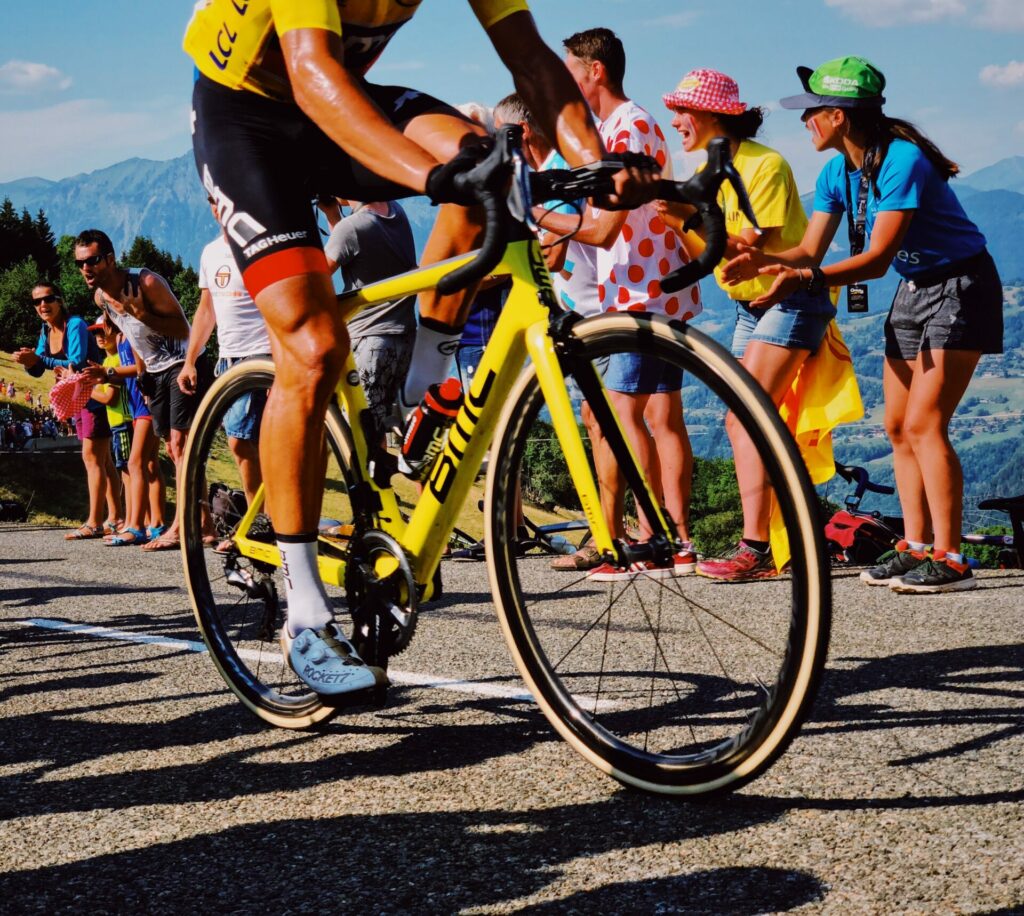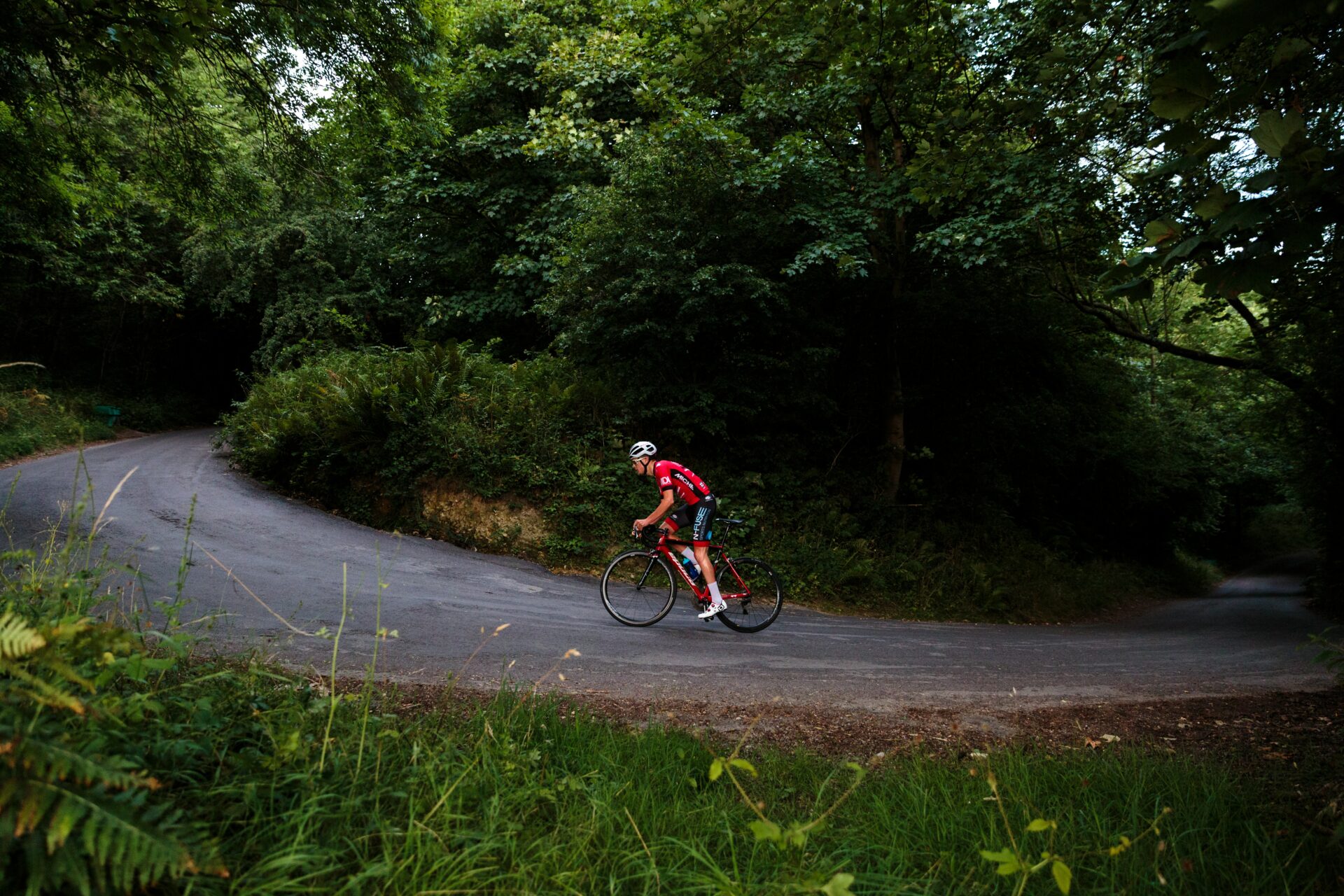Climbing is the supreme discipline in pro cycling. The best climbers in the world attack each other on the most difficult hills at the Tour de France.
But also for most cyclists, climbing is the greatest challenge. That’s due to the epic nature of these mystic hills radiate in the Alpes. These long climbs feel interminable, steep, and hurt a lot. That makes cycling uphill the ultimate fight, it’s just you and your bike against the forces of nature—a real mental battle.
You have steep, long, short, or long and steep climbs. It all requires a different approach to tackle the most fabulous hills.
If you want to get to the top of the climb without getting tired, these climbing tips will help you. We look at how to ride long climbs from 10 minutes to over an hour and how to traverse steep hills.
Here’s to biking uphill properly…
1. Choose the Right Bike for Climbing
The best bike when it goes uphill is the road bike.
This is because of its unique structure: A light and aerodynamic frame, an advantageous bar, a more aggressive position, tires with better rolling resistance, and superior power transfer, all make the road bike the go-to option for hill climbing on tarmac. The longer the climb the better the road bike can display its benefits against the likes of a mountain bike or a gravel bike.
If you want to ride faster when the gradient gets steeper and the climb feels endless there’s no way around the road bike.
So, the next time someone asks you “Are road bikes easier to ride uphill?” you know the answer.
But there’s more to biking hills properly.

2. Find Your Gearing for Climbing
The gears you use when you go for a long day in the hills are quite individual. It depends on the hill, your preferences as well as your experience as a cyclist. There is no best gear ratio for cycling uphill, but rather it depends.
For example, for a 4% gradient climb gears may not be as important as for a 10% steep hill. A beginner may go uphill slower and may need easier gears than a more experienced rider.
However, I think it’s a good idea to do a quick “bicycle gears for dummies” to clear any misunderstanding.
For climbing, you will use your low gears because it’s easy and easy is good for climbing. Low means your smallest chainring in the front and the largest cog on your cassette in the back. Downshift into this position and the resistance will be the easiest, making it the best option to climb smoothly and remain your preferred cadence.
Low gears (easy) are good for climbing and high gears (hard) are good for downhills.
Today, there are different gear options available and the development of groupsets makes it easy to choose whatever gearing you want.
Beginners amid their first Mont Ventoux attempt can go for a compact 50/34 chainring setup and an 11-32 cassette. Therefore, you’re safe to never run out of gears. And even if you don’t use the largest cog, it’s always comforting to have that lifebelt. On the other hand, more experienced riders can choose a semi-compact chainring setup which is 52/36.
Elite cyclists can go for the standard 53/39 gearing and possibly an 11-28 cassette. I used it myself on the Mont Ventoux and it works well for me. However, always keep your rider type in mind. Sprinters are most often heavier and slower than pure climbers and therefore require other gearing.
Check the climbs you target to ride and plan your gearing accordingly. Remember the steeper and longer the climb the easier your gear setup should be.
Yet there’s still confusion about how to use your gears and bike. Should you climb up seated or should you stand up? And what about cadence, is low cadence preferred when riding uphill? Let’s talk about that now.
3. Better Climbing Techniques: Staying Seated vs. Standing Up
The seated and standing positions in cycling are both pretty common. And two pro cyclists couldn’t climb more differently. While Alberto Contador dances up the climbs, Chris Froome remains seated. But is one position better than the other?
While climbing you use different muscles. The main muscles used for climbing in cycling are the glutes (butt), quads (upper leg muscles), and calves. When you go out of the saddle you recruit more leg muscles as well as your upper body muscles.
Standing, therefore, is less efficient than seated climbing because you use more muscles.
Yet it’s not as easy as it seems.
But we have a lot of research on the case of “seated vs standing climbing.” And the results look promising.
One study found that at an 8% gradient when in the standing position, VO2max and heart rate elevate, and the amount of air you breathe in and out increases due to the higher metabolic cost of standing compared to seated climbing. It seems like standing up while climbing may have negative effects on the cycling economy.
The majority of studies came to the same conclusions when looking at the cycling economy.
Thus, the advice for elite cyclists is to “stay seated as long as possible to save energy and only go out of the saddle to alleviate pressure points and possible muscle soreness.”
However, these studies don’t tell the full story. When hills get steep could standing even be beneficial?

4. Riding Steep Hills Properly
One study put the question of steep climbs to test comparing a 4% climb with a 10% climb. At the 10% gradient, the difference between seated compared to standing climbing disappeared. However, perceived exertion was lower for subjects when climbing in the standing position.
Cyclists have a natural tendency to ride in the standing position on steep hills. That might be the reason for the study result. Climbing out of the saddle might not affect you physiologically when facing steep hills.
But when intensity is very high standing up is the clear winner. No matter, if you want to accelerate or sprint, standing up is superior to seated climbing. This is due to the upper body muscles that play an important role in power production at high intensity.
And as cadence drops when standing up it’s a good idea to drop a gear or two to make up the deficit.
Though the optimal cadence doesn’t exist, science can give us a good guideline as stated in an article: “The cadence to minimize perceived exertion should reflect a trade-off between the most metabolically efficient cadence and the most mechanically efficient cadence.”
What does this mean? You need to find the preferred cadence that works best for you. Cycling up hills this might be between 70-85 rpm. That’s why Froome and Contador ride so differently. Contador climbs at a lower cadence. Therefore, it’s easier for him to stand up on climbs.
Despite that, cadence is always lower when climbing, so you might train at low cadences when you plan to ride long hills but have none in your area.
So, for our optimal performance, we need both. We need to stay seated but we also need to stand up. This is what studies indicate as well: “Alternating between seated and standing positions occasionally during submaximal cycling is likely to improve performance by postponing fatigue in the principally active muscles.”
You’re looking for a sweet spot where you can climb your best.
Just remember to stay seated on climbs at lower intensities and gradients to preserve energy and use the aerodynamic advantage of seated riding.
5. Hands Position on Climbs
When we look at the hand position on the bar it’s quite individual as well. Look at the pros and you see almost every pro stays different in the hoods, for instance.
For a long uphill ride that isn’t too steep, you may find the top bar most comfortable and the drops for some standing riding. Ride in the top bar, the hoods, and the drops, and find what works best for you on different climbs.
Conclusion
Let’s resume it all again into short practical tips:
- The best choice for biking up a hill is a road bike due to many advantages such as power transfer, tires, and gearing
- Choose the right gears on your bike to ride hills more easily and more efficiently. Look at your level as a cyclist and the difficulty of the climbs you target.
- Make use of both the seated climbing technique as well as the standing technique.
- At lower intensities and lower gradient hills stay seated as long as possible to conserve energy and only stand up occasionally to release pressure
- Riding up steep climbs, the standing position may be preferred and higher power production is possible
- There’s no optimal cadence, there’s only your preferred cadence to feel best and perform your best.
- Find the bar positions that work best for you on different types of climbs, for example, the top bar for long climbs and hoods for steep climbs
Climbing is challenging. But hopefully, these tips will help you climb more easily and conquer all hills.
In the next article, I’ll show you how to become a faster climber in cycling.
Ready to Improve Your Climbing Ability?
If you enjoyed this and want to improve your cycling performance, then get your hands on one of my plans, available on TrainingPeaks, and ride faster for longer, or click below to get my specific base, build, and peak plans for amateur and elite cyclists:
- RV The Block Periodization Plan, 4 Weeks (6-8 Hours)
- RV Improve Your FTP, 8 Weeks on 6 Hours, 10 Hours, or 15 Hours
- RV Threshold Booster, 4 Weeks (10 Hours)
- RV Gravel Advanced Base Plan 8-12 Hours (12 Weeks) – All Gravel Races
Follow me on Instagram for more Cycling Content.
- Get my favorite Power Meter *here.
- Get my favorite Shoes *here.
- Get the Vittoria Corsa Tyres I use *here.
Footnotes
- Physiological and Biomechanical Differences Between Seated and Standing Uphill Cycling: https://digitalcommons.wku.edu/ijes/vol13/iss2/24/
- Seated Versus Standing Cycling in Competitive Road Cyclists: Uphill Climbing and Maximal Oxygen Uptake: https://cdnsciencepub.com/doi/abs/10.1139/h96-013#.XyxQf5NKiqA
- Effect of cycling position on oxygen uptake and preferred cadence in trained cyclists during hill climbing at various power outputs: https://link.springer.com/article/10.1007/s00421-006-0358-7
- Seated versus standing position for maximization of performance during intense uphill cycling: https://www.tandfonline.com/doi/abs/10.1080/02640410801910277?cookieSet=1
- Level ground and uphill cycling efficiency in seated and standing positions: https://citeseerx.ist.psu.edu/viewdoc/download?doi=10.1.1.950.5233&rep=rep1&type=pdf
- Upper limb and trunk muscle activity patterns during seated and standing cycling: https://www.tandfonline.com/doi/abs/10.1080/02640414.2016.1179777
- The Effect of Cycling Intensity on Cycling Economy During Seated and Standing Cycling: https://journals.humankinetics.com/view/journals/ijspp/11/7/article-p907.xml
- Effects of Standing vs. Seated Posture on Repeated Wingate Performance: https://www.researchgate.net/publication/8153726_Effects_of_Standing_vs_Seated_Posture_on_Repeated_Wingate_Performance
- Uphill Cycling: Seated versus Standing Economy and Heart Rate: https://www.proquest.com/openview/300cfbd3e02aad779567518325eb3905/1?pq-origsite=gscholar&cbl=2031905
- The comparison of maximal oxygen consumption between seated and standing leg cycle ergometry: a practical analysis: https://go.gale.com/ps/anonymous?id=GALE%7CA170372855&sid=googleScholar&v=2.1&it=r&linkaccess=abs&issn=15439518&p=HRCA&sw=w
- Optimisation of starting conditions in track cycling: https://link.springer.com/article/10.1007/s11332-014-0192-y
- The Effect of Cycling Intensity on Cycling Economy During Seated and Standing Cycling: https://core.ac.uk/download/pdf/42412057.pdf
Ad Hint for Asterisk Links
*Asterisks are affiliate links from services and gear I use and love. If you take action (i.e. make a purchase) I’ll earn some coffee money which I promise to drink while you enjoy the content and offers. You don’t pay a higher price.
